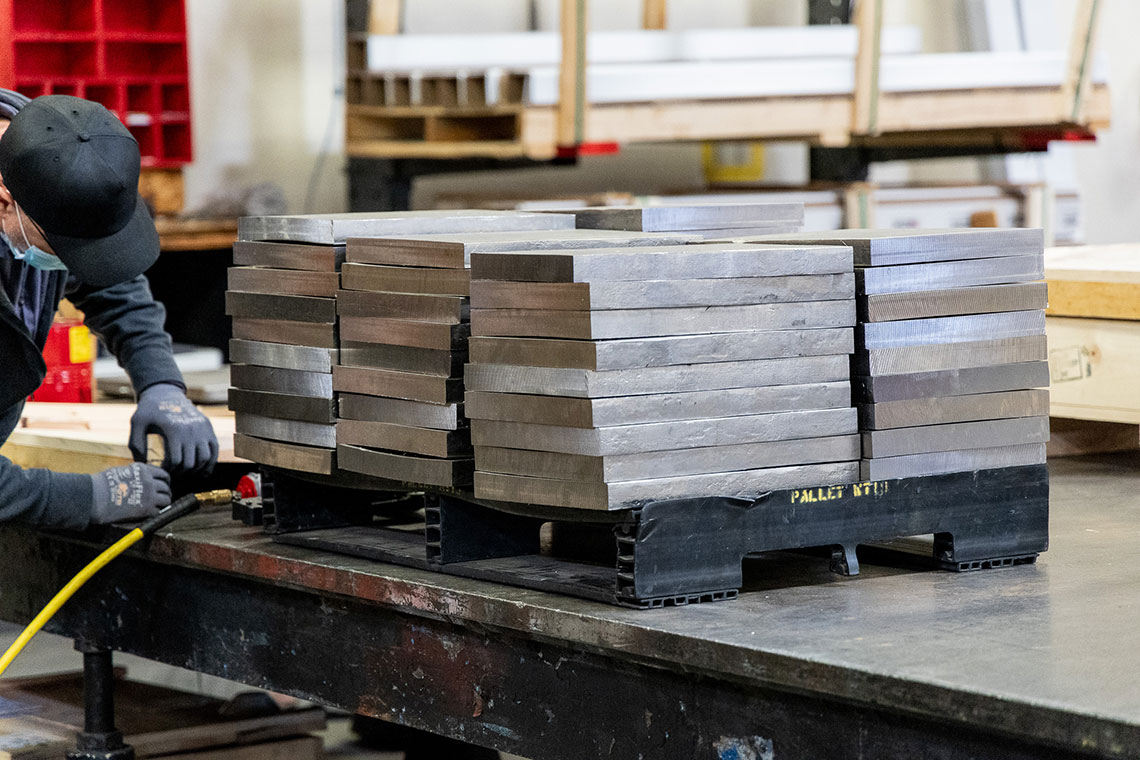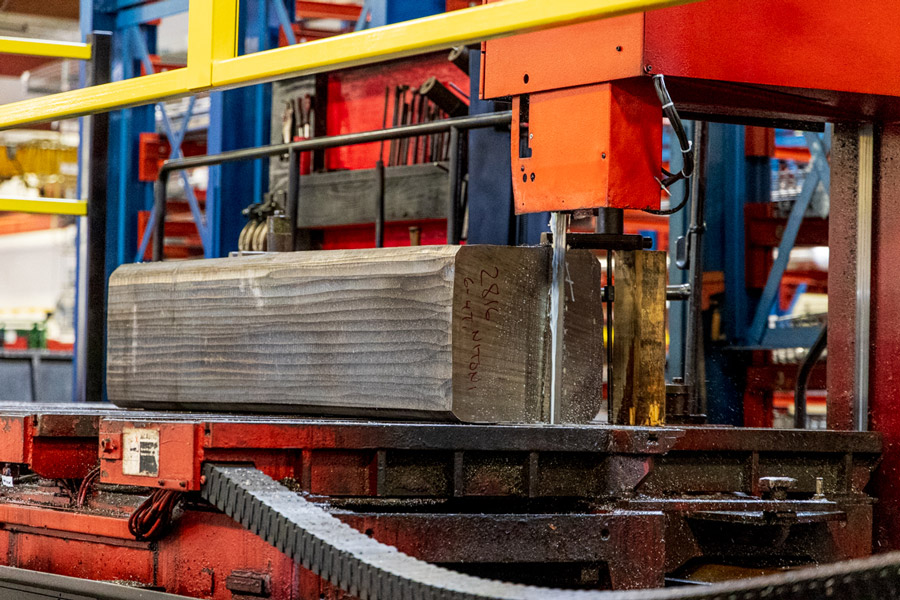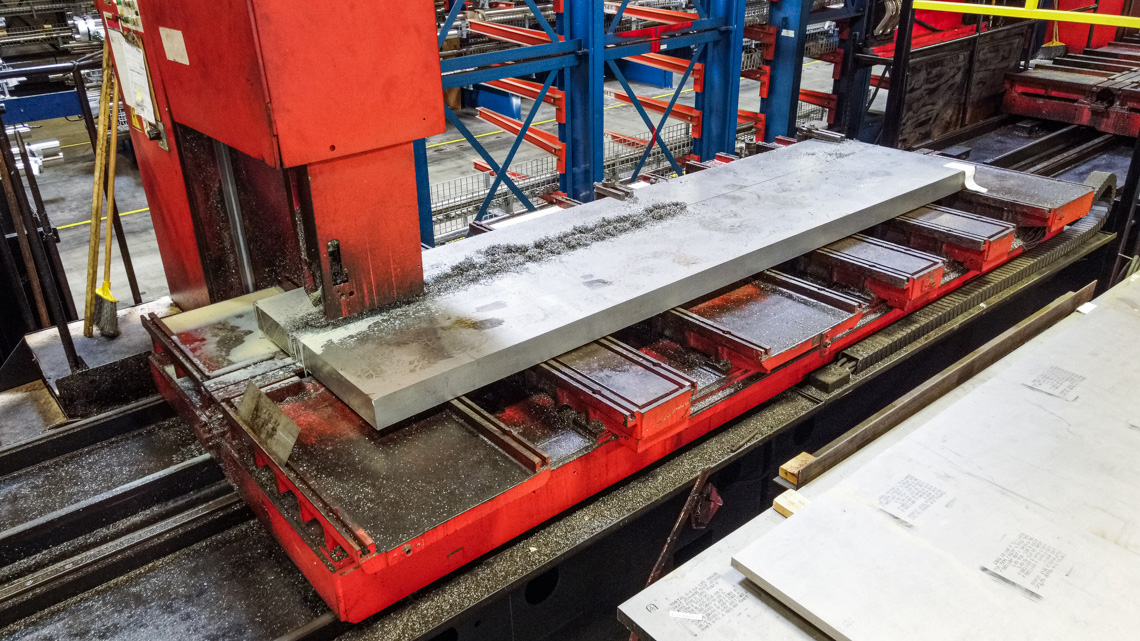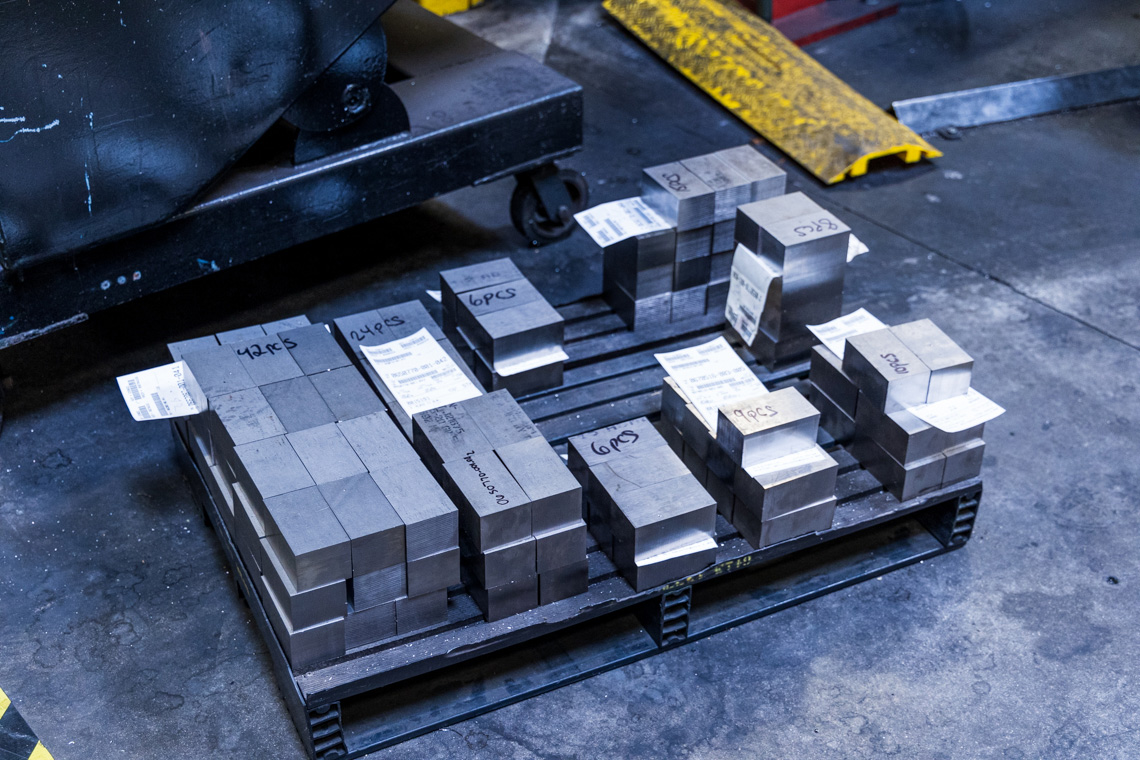Home » News & Articles » Titanium Grades and Relative Properties
Rolled Alloys provides the following information to offer a basic understanding of the various titanium grades and their relative properties.
Titanium comes in two main categories: commercially pure grades and titanium alloy grades. Titanium alloy categories include alpha-titanium, beta-titanium, and alpha-beta titanium, which correspond to different structural phases of the material. The commercially pure grades are classified as Grades 1 through 4. Each grade exhibits distinct variations in allowable element limits and strength levels. More detailed information about the chemical compositions and mechanical properties of these grades is provided below.
| Grade | C | N | O | H | Fe | Ti |
| 1 | 0.08 | 0.03 | 0.18 | 0.015 | 0.2 | Bal |
| 2 | 0.08 | 0.03 | 0.25 | 0.015 | 0.3 | Bal |
| 3 | 0.08 | 0.05 | 0.35 | 0.015 | 0.3 | Bal |
| 4 | 0.08 | 0.05 | 0.40 | 0.015 | 0.5 | Bal |
*All values are maximums unless a range is provided
| Grade | Tensile (ksi) | Yield (ksi) | Elongation (%) |
| 1 | 35 | 20 | 24 |
| 2 | 50 | 40 | 20 |
| 3 | 65 | 55 | 18 |
| 4 | 80 | 70 | 15 |
*All values are minimums per ASTM B348
Three titanium alloys closely resemble commercially pure titanium being Grades 7, 11, and 12. Grade 7 is comparable to Grade 2 in terms of mechanical properties but boasts superior corrosion resistance due to the addition of up to 0.25% Pd, making it exceptionally resilient against reducing acids. Similarly, Grade 11 shares similarities with Grade 1 but includes an addition of up to 0.25% Pd, enhancing its resistance to crevice corrosion and reducing acids. Grade 12, on the other hand, features slightly higher minimum mechanical property requirements than Grade 3 but lower than Grade 4. What sets Grade 12 apart from the commercially pure grades is its composition, containing 0.60-0.90% nickel content and 0.20-0.40% molybdenum. The tables below present the chemical compositions and mechanical properties of these alloys.
Grade | C | N | O | H | Fe | Pd | Ni | Mo | Ti |
7 | 0.08 | 0.03 | 0.25 | 0.015 | 0.30 | 0.12-0.25 | – | – | Bal |
11 | 0.08 | 0.03 | 0.18 | 0.015 | 0.20 | 0.12-0.25 | – | – | Bal |
12 | 0.08 | 0.03 | 0.25 | 0.015 | 0.30 | – | 0.60-0.90 | 0.20-0.40 | Bal |
*All values are maximums unless a range is provided
Grade | Tensile (ksi) | Yield (ksi) | Elongation (%) |
7 | 50 | 40 | 20 |
11 | 35 | 20 | 24 |
12 | 70 | 50 | 18 |
*All values are minimums per ASTM B348
The next alloy, often called “6-4” or Grade 5, is the most widely used titanium alloy globally, constituting over half of the world’s titanium production. Another widely utilized variation is 6-4 ELI (Extra Low Interstitial), recognized as Grade 23, predominantly employed in the medical implant industry. All 6-4 alloys belong to the alpha-beta alloy category and can be heat-treated to achieve a wide range of properties, depending on the heat treatment applied. However, it’s worth noting that 6-4 ELI presents challenges in achieving minimum mechanical heat-treat properties due to its strict maximum oxygen requirement. Please consult the table below for detailed information on chemistry and typical mechanical properties.
Grade | Al | V | C | N | O | H | Fe | Ti |
5 | 5.50-6.75 | 3.50-4.50 | 0.08 | 0.05 | 0.20 | 0.015 | 0.40 | Bal |
5 STA | 5.50-6.75 | 3.50-4.50 | 0.08 | 0.05 | 0.20 | 0.015 | 0.40 | Bal |
23 | 5.50-6.50 | 3.50-4.50 | 0.08 | 0.03 | 0.13 | 0.0125 | 0.25 | Bal |
*All values are maximums unless a range is provided
Grade | Tensile (ksi) | Yield (ksi) | Elongation (%) |
5 | 130 | 120 | 10 |
5 STA | 130 | 120 | 10 |
23 | 120 | 110 | 10 |
*All values are minimums per ASTM B348
For more specific titanium questions, give us a call at 800-521-0332 or email us at help-tech@rolledalloys.com
Titanium Grade Chemistry Table
| Grade | C | O | N | H | Fe | Al | V | Pd | Ru | Ni | Mo | Cr | Co | Zr | Nb | Sn | Si | Ti |
| 1 | 0.08 | 0.18 | 0.03 | 0.015 | 0.20 | – | – | – | – | – | – | – | – | – | – | – | – | Bal |
| 2 | 0.08 | 0.25 | 0.03 | 0.015 | 0.30 | – | – | – | – | – | – | – | – | – | – | – | – | Bal |
| 3 | 0.08 | 0.35 | 0.05 | 0.015 | 0.30 | – | – | – | – | – | – | – | – | – | – | – | – | Bal |
| 4 | 0.08 | 0.10 | 0.05 | 0.015 | 0.50 | – | – | – | – | – | – | – | – | – | – | – | – | Bal |
| 5 | 0.08 | 0.20 | 0.05 | 0.015 | 0.40 | 5.50-6.75 | 3.50-4.50 | – | – | – | – | – | – | – | – | – | – | Bal |
| 6 | 0.08 | 0.20 | 0.03 | 0.015 | 0.50 | 4.00-6.00 | – | – | – | – | – | – | – | – | – | 2.00-3.00 | – | Bal |
| 7 | 0.08 | 0.25 | 0.03 | 0.015 | 0.30 | – | – | 0.12-0.25 | – | – | – | – | – | – | – | – | – | Bal |
| 9 | 0.08 | 0.15 | 0.03 | 0.015 | 0.25 | 2.50-3.50 | 2.00-3.00 | – | – | – | – | – | – | – | – | – | – | Bal |
| 11 | 0.08 | 0.18 | 0.03 | 0.015 | 0.20 | – | – | 0.12-0.25 | – | – | – | – | – | – | – | – | – | Bal |
| 12 | 0.08 | 0.25 | 0.03 | 0.015 | 0.30 | – | – | – | – | 0.60-0.90 | 0.20-0.40 | – | – | – | – | – | – | Bal |
| 13 | 0.08 | 0.1 | 0.03 | 0.015 | 0.20 | – | – | – | 0.04-0.06 | 0.40-0.60 | – | – | – | – | – | – | – | Bal |
| 14 | 0.08 | 0.15 | 0.03 | 0.015 | 0.30 | – | – | – | 0.04-0.06 | 0.40-0.60 | – | – | – | – | – | – | – | Bal |
| 15 | 0.08 | 0.25 | 0.05 | 0.015 | 0.30 | – | – | – | 0.04-0.06 | 0.40-0.60 | – | – | – | – | – | – | – | Bal |
| 16 | 0.08 | 0.25 | 0.03 | 0.015 | 0.30 | – | – | 0.04-0.08 | – | – | – | – | – | – | – | – | – | Bal |
| 17 | 0.08 | 0.18 | 0.03 | 0.015 | 0.20 | – | – | 0.04-0.08 | – | – | – | – | – | – | – | – | Bal | |
| 18 | 0.08 | 0.15 | 0.03 | 0.015 | 0.25 | 2.50-3.50 | 2.00-3.00 | 0.04-0.08 | – | – | – | – | – | – | – | – | – | Bal |
| 19 | 0.05 | 0.12 | 0.03 | 0.02 | 0.30 | 3.00-4.00 | 7.50-8.50 | – | – | – | 3.50-4.50 | 5.50-6.50 | – | 3.50-4.50 | – | – | – | Bal |
| 20 | 0.05 | 0.12 | 0.03 | 0.02 | 0.30 | 3.00-4.00 | 7.50-8.50 | 0.04-0.08 | – | – | 3.50 | 5.50-6.50 | – | – | – | – | – | Bal |
| 21 | 0.05 | 0.17 | 0.03 | 0.015 | 0.40 | 2.50-3.50 | – | – | – | – | 4.50 | – | – | – | 2.20-3.20 | – | 0.15-0.25 | Bal |
| 23 | 0.08 | 0.13 | 0.03 | 0.0125 | 0.25 | 5.50-6.50 | 3.50-4.50 | – | – | – | 14.00-16.00 | – | – | – | – | – | – | Bal |
| 24 | 0.08 | 0.20 | 0.05 | 0.015 | 0.40 | 5.50-6.75 | 3.50-4.50 | 0.04-0.08 | – | – | – | – | – | – | – | – | – | Bal |
| 25 | 0.08 | 0.20 | 0.05 | 0.015 | 0.40 | 5.50-6.75 | 3.50-4.50 | 0.04-0.08 | – | 0.30-0.08 | – | – | – | – | – | – | – | Bal |
| 26 | 0.08 | 0.25 | 0.03 | 0.015 | 0.30 | – | – | – | 0.08-0.14 | – | – | – | – | – | – | – | – | Bal |
| 27 | 0.08 | 0.18 | 0.03 | 0.015 | 0.20 | – | – | – | 0.08-0.14 | – | – | – | – | – | – | – | – | Bal |
| 28 | 0.08 | 0.15 | 0.03 | 0.015 | 0.25 | 2.50-3.50 | 2.00-3.00 | – | 0.08-0.14 | – | – | – | – | – | – | – | – | Bal |
| 29 | 0.08 | 0.13 | 0.03 | 0.0125 | 0.25 | 5.50-6.50 | 3.50-4.50 | – | 0.08-0.14 | – | – | – | – | – | – | – | – | Bal |
| 30 | 0.08 | 0.25 | 0.03 | 0.015 | 0.30 | – | – | 0.04-0.08 | – | – | – | – | 0.20-0.80 | – | – | – | – | Bal |
| 31 | 0.08 | 0.35 | 0.05 | 0.015 | 0.30 | – | – | 0.04-0.08 | – | – | – | – | 0.20-0.80 | – | – | – | – | Bal |
| 32 | 0.08 | 0.11 | 0.03 | 0.015 | 0.25 | 4.50-5.50 | 0.60-1.40 | – | – | – | 0.60-1.20 | – | – | 0.60-1.40 | – | 0.60-1.40 | 0.60-0.14 | Bal |
| 33 | 0.08 | 0.25 | 0.03 | 0.015 | 0.30 | – | – | 0.01-0.02 | 0.02-0.04 | 0.35-0.55 | – | 0.10-0.20 | – | – | – | – | – | Bal |
| 34 | 0.08 | 0.35 | 0.05 | 0.015 | 0.30 | – | – | 0.01-0.02 | 0.02-0.04 | 0.35-0.55 | – | 0.10-0.20 | – | – | – | – | – | Bal |
| 35 | 0.08 | 0.25 | 0.05 | 0.015 | 0.20-0.80 | 4.00-5.00 | 1.10-2.10 | – | – | – | 1.50-2.50 | – | – | – | – | – | 0.20-0.40 | Bal |
| 36 | 0.04 | 0.16 | 0.03 | 0.015 | 0.03 | – | – | – | – | – | – | – | – | – | 42.00-47.00 | – | – | Bal |
| 37 | 0.08 | 0.25 | 0.03 | 0.015 | 1.20-1.80 | 1.00-2.00 | – | – | – | – | – | – | – | – | – | – | Bal | |
| 38 | 0.08 | 0.20-0.30 | 0.03 | 0.015 | 3.50-4.50 | 2.00-3.00 | – | – | – | – | – | – | – | – | – | Bal |
Titanium Grade Mechanical Property Table
Grade | Tensile (ksi) | Yield (ksi) | Elongation (%) |
1 | 35 | 20 | 24 |
2 | 50 | 40 | 20 |
2H | 58 | 40 | 20 |
3 | 65 | 55 | 18 |
4 | 80 | 70 | 15 |
5 | 130 | 150 | 10 |
6 | 120 | 115 | 10 |
7 | 50 | 40 | 20 |
7H | 58 | 40 | 20 |
9 | 90 | 70 | 15 |
9D | 90 | 70 | 12 |
11 | 35 | 20 | 24 |
12 | 70 | 50 | 18 |
13 | 40 | 25 | 24 |
14 | 60 | 40 | 20 |
15 | 70 | 55 | 18 |
16 | 50 | 40 | 20 |
16H | 58 | 40 | 20 |
17 | 35 | 20 | 24 |
18 | 90 | 70 | 15 |
18D | 90 | 70 | 12 |
19E | 115 | 110 | 15 |
19F | 135 | 130 to 159 | 10 |
19G | 165 | 160 to 185 | 5 |
20E | 115 | 110 | 15 |
20F | 135 | 130 to 159 | 10 |
20G | 165 | 160 to 185 | 5 |
21E | 115 | 110 | 15 |
21F | 140 | 130 to 159 | 10 |
21G | 170 | 160 to 185 | 8 |
23 | 120 | 110 | 10 |
23D | 120 | 110 | 7.5, 6.0 |
24 | 130 | 120 | 10 |
25 | 130 | 120 | 10 |
26 | 50 | 40 | 20 |
26H | 58 | 40 | 20 |
27 | 35 | 20 | 24 |
28 | 90 | 70 | 15 |
28D | 90 | 70 | 12 |
29 | 120 | 110 | 10 |
29D | 120 | 110 | 7.5, 6.0 |
30 | 50 | 40 | 20 |
31 | 65 | 55 | 18 |
32 | 100 | 85 | 10 |
33 | 50 | 40 | 20 |
34 | 65 | 55 | 18 |
35 | 130 | 120 | 5 |
36 | 65 | 60 to 95 | 10 |
37 | 50 | 31 | 20 |
38 | 130 | 115 | 10 |
*All values are minimums per ASTM B348
D Properties for material in transformed-beta condition.
E Properties for solution treated condition.
F Properties for solution treated and aged condition–Moderate strength (determined by aging temperature).
G Properties for solution treated and aged condition–High strength (determined by aging temperature).

2026 Trade Show Schedule
Connect with our team in person throughout 2026 at these key industry events. Explore our full trade show schedule to discover where we’ll be exhibiting

How Titanium Sponge and Scrap Become Final Products
Titanium sponge and scrap are the starting materials for producing titanium ingots and slabs. Through processes like vacuum arc remelting (VAR) and hearth melting, these
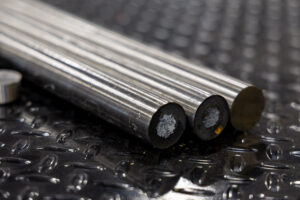
Alloying Elements Explained
Alloying elements play a critical role in shaping the strength, corrosion resistance, and performance of metals. This article breaks down the most common alloying elements,
Never Miss an Update - Subscribe Today!
Get application insights, material guides, and technical answers straight from the leaders in high-performance alloys.
Share:
QUOTE, BUY, TRACK
We make it easy to get instant pricing and purchase your metal at the click of a button. Track your order progress, get notified when it ships, and follow your shipment online until it’s delivered. It’s that easy!
Latest Articles
2026 Trade Show Schedule
Connect with our team in person throughout 2026 at these key industry events. Explore our full trade show schedule to discover where we’ll be exhibiting all year long.
How Titanium Sponge and Scrap Become Final Products
Titanium sponge and scrap are the starting materials for producing titanium ingots and slabs. Through processes like vacuum arc remelting (VAR) and hearth melting, these materials are refined into high-purity forms that are then forged, rolled, and finished into titanium plates, bars, and components.
Alloying Elements Explained
Alloying elements play a critical role in shaping the strength, corrosion resistance, and performance of metals. This article breaks down the most common alloying elements, explains how they affect material properties, and provides guidance for choosing the right alloy for any application.
How the Kroll Process Produces Titanium Sponge
The Kroll process is the primary industrial method for transforming titanium ore into metallic titanium…
RA 253 MA Delivers High-Temp Performance in Industry Feature
Rolled Alloys has been featured in Heat Treat Today with the article, “A Microalloyed Solution for High-Temp Applications.”

